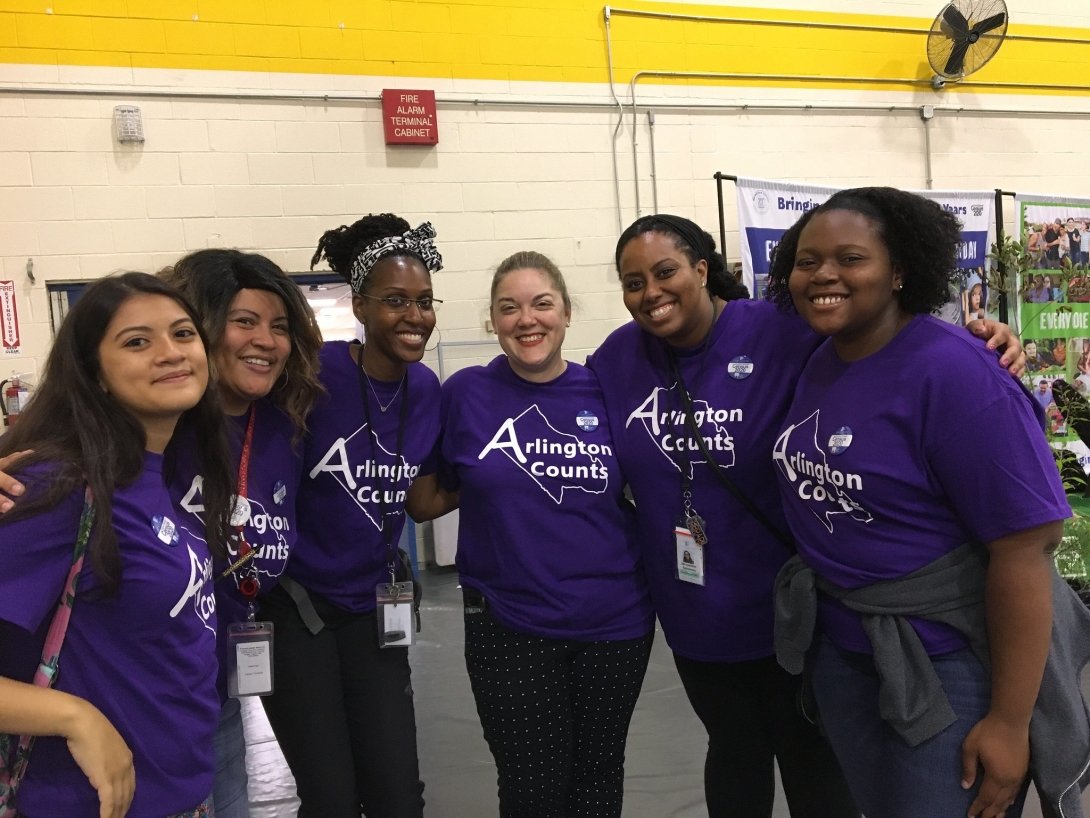The Digital Divide Promises to Skew Census Results

Attendees at an “Arlington Counts” event promoting the census in Arlington, Virginia.
Flickr user Arlington County
2020 is going to be a big year for politics — and I don’t just mean the election.
Every 10 years, the U.S. Census Bureau tries to count every person in the country, and the data it collects is crucial. The results determine all sorts of political counts, including how many seats each state has in the House of Representatives, how local voting districts are drawn and how federal resources are distributed.
And this time it’s going to be a little different: The 2020 Census is going digital.
Most people will be directed to fill out the census survey online. Residents will still have some limited options to fill out a traditional paper form, but the Census Bureau expects approximately 78.2 percent of households to respond online.
But the digital divide means that a digital census raises new problems when it comes to counting correctly.
Disconnected communities get left behind
Approximately 22 percent of households nationwide still don’t have home broadband, which means they’ll have a harder time responding to an online census.
Poor families and people of color are particularly disadvantaged — only 56 percent of households making less than $20,000 have home broadband, while low-income Black and Hispanic households lag behind their low-income white counterparts when it comes to home-internet adoption. Free Press has written extensively about the persistent dangers of these racial and economic digital divides.
Cities and states have started raising the alarm about these divides. A report from the New York City comptroller warns that 30 percent of the city’s Black and Hispanic residents lack broadband, and the same goes for 44 percent of residents living in poverty. In Atlanta, only 75 percent of households have home internet.
Even among those who have home broadband, people of color and low-income families are more likely to depend exclusively on mobile internet. Mobile is certainly better than nothing, but restrictive data caps and other potential barriers may make it challenging for mobile-only users to respond to an online census.
These communities are already more likely to be undercounted than their more economically and racially privileged peers, and digital inequities stand to make the problem worse. When communities are undercounted, they get less political representation and fewer resources — a devastating proposition for those already lacking in both and struggling against systemic racism and poverty.
Improving the digital count
Some communities and institutions are working hard to fill the gap.
The City University of New York’s Center for Urban Research developed Hard To Count 2020, a mapping tool that identifies the areas most at risk of being undercounted, based on internet-adoption levels, demographic characteristics and more. Rep. Yvette Clarke (D–New York) raised the issue at a recent House hearing, asking panelists to expand on their ideas for boosting broadband adoption to ensure an accurate count. Joshua Edmonds, director of digital inclusion for Detroit, which tops the list of hard-to-count cities, replied that the city is doing everything it can. “If you don’t have the internet, then you don’t count. And if you don’t count, then you don’t matter,” he said.
Libraries in particular are stepping up, often with limited resources, to offer disconnected residents not only internet access but also trainings, materials and secure kiosks to complete their census responses. These efforts have promise. People in low-income Black and Hispanic communities (at 28 percent and 29 percent respectively) are disproportionately more likely to use the internet outside the home in places like libraries and other public access points.
Census 2020 is just one example of critical tools and services, like job applications and applications for federal assistance, that are migrating online — and leaving the disconnected behind. We can’t afford to allow systemic racism and monopolistic cable companies to keep poor people and communities of color offline, stranded by artificially high prices and nonexistent competition.
This is an all-hands-on-deck moment. If we don’t act, the digital divide could lead to a serious undercount during Census 2020 that drains political and economic resources from our most marginalized communities. Reach out to your local libraries, community institutions and Complete Count Committees. Find out how you can help raise awareness and share resources for the first truly digital census.